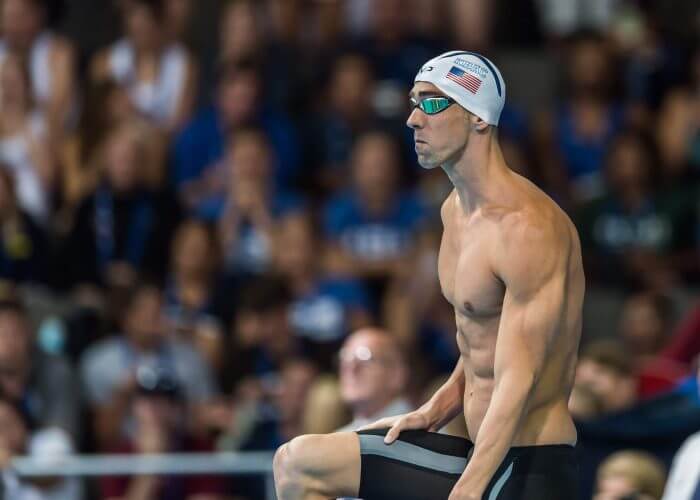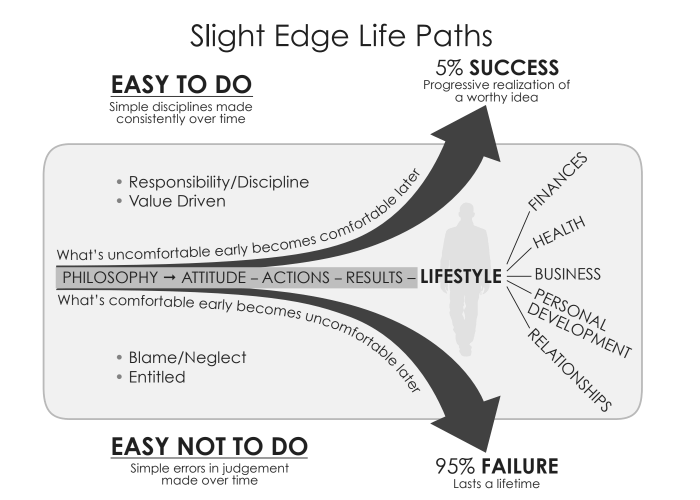How to Tame Your Race-Time Jitters

By Michaela Morrison, Swimming World College Intern.
The Problem of the Mind
We often try to compensate for months of training when it’s too late; when the work is already behind us and we’re staring down the lane before a race. We question our training, and all at once, any work we’ve done seems to vanish. We must learn to tame our race-time jitters.
Instead of searching inward for understanding, we turn to the internet to find articles about how to stop being so nervous before races. These efforts lead to dead-ends because they lack one specific thing: a solution that addresses the core problem of the blatant lack of mental preparation.

Photo Courtesy: Peter H. Bick
We focus on the physical aspect of training, but we tend to neglect the mental side – arguably the most powerful aspect of training. Our thoughts control our foresight, and sometimes a race can be won or lost before the starting beep sounds. Jeff Olson, author of The Slight Edge and speaker on personal achievement, highlights this very issue in his book, acknowledging “the depths of failure that simple daily errors in judgment could produce.”
It’s the attitude with which we approach a solution that makes all the difference.
We can motivate ourselves for a few days after a bad meet – life goes on and we forget about it. Back to the pool we go, and back to our old ways we go. We may be upset with our races, but we forget and move on.
But moving on doesn’t fix all problems.
Finding a Solution
Solutions without a clear understanding of the problem are superficial remedies to larger issues. When situations (like talking yourself out of a race before it even starts) continue to occur, we are neglecting to address the source of the problem. If we are chronically anxious before a race, we are lacking something in day-to-day efforts.

Photo Courtesy: Erich Schlegel-USA TODAY Sports
What explains the mindset difference between training and racing?
A possible reason for inconsistency in performance between competitions and practices is pressure: the pressure to be better, to earn a glorious relay position, you name it. But we can’t let that pressure get the better of us.
We have all most likely experienced a great day at practice when swimming felt so easy, then when we get to a race, we expect that it’ll all come together only to be frustrated with the results.
Swimmers place themselves at a disadvantage when they disregard the the “now or never” mindset to each practice. They falter come race time, realizing that they have something to lose.
Many treat practice as a safe zone: it’s just another practice. In some senses, practice is where you play around with new techniques without the pressure to perform. But athletes also tend to think that “there’s always the next one,” whether it be a demanding practice or a high-stress race, which causes them to survive the challenge rather than thrive in it. We need to change this mindset; we need to approach every session with the same “leave-it-all-in-the-pool” attitude when stepping behind the blocks.
We always have something to lose, whether in practice or the biggest meet of our lives – but the stakes don’t always feel this high.

Photo Courtesy: Erich Schlegel-USA TODAY Sports
The “It” Factor
Thoughts and actions go hand in hand, just as you’d expect performance in practice to relate to performance in meets. Yet the mind is a complex network of collective thoughts that influence our actions. Our minds and bodies know when we’re unsure of ourselves, and those derailing doubts will show up in races when unchecked.
So what is this nebulous “it factor” we’re after to control the jitters and perform what we have practiced? How do you bridge the gap between our mind and body?
Olson introduces a diagram to conceptualize the interplay between attitude, actions and results. It illustrates that the day-to-day choices we make ultimately can work for us or against us.
Continually choosing the comfortable route will lead to failure 95% of the time. Stepping into what’s uncomfortable now – such as truly giving an all-out effort during a test set – will become comfortable down the road and lead to success. This welcoming of pain and challenge in the moment is truly the “it factor.”

Photo Courtesy: Jeff Olson, The Slight Edge
Olson suggests starting your journey to success by beginning challenging yet attainable disciplines. By starting small, we allow our bodies and minds to cope with new stressors without overwhelming our minds and bodies. Over time, things that were once difficult become easier as long as they are done consistently. We are programmed to get results quickly, and therefore approach our training with that same mentality.
Choosing Excellence as a Lifestyle
Most importantly, the training doesn’t stop at practice. You won’t reap the rewards of your consistency until you touch the wall on race day, so you must be practicing the “it-factor” mindset when it’s time to race.
Success may be a slow process, yet failure is swift and discourages us from working toward our goals.
If you are struggling to find your “it factor,” start with cultivating this one focus: belief. Believe in yourself and in your training.
When we start to consistently believe in ourselves, our little problems seem to disappear. A good friend of mine said: “Belief isn’t a sprinkle of pixie dust: it’s the whole jar.” A dash of belief whenever you feel like it isn’t going to produce lasting results. It takes a tremendous amount of consistent effort to start seeing results.

Photo Courtesy: Jeremy Crawford
You must get comfortable with being uncomfortable. By practicing one discipline every day, you’re already increasing your chances of achieving your goals. One day down the road, all you’ve been working for will come together – but not by chance. It’ll happen because of your intentional, daily practice.
All commentaries are the opinion of the author and do not necessarily reflect the views of Swimming World Magazine nor its staff.



